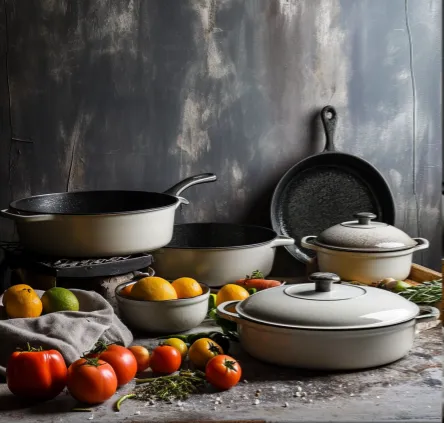- 150m Southwards, West DingWei Road, Nanlou Village, Changan Town, GaoCheng Area, Shijiazhuang, HeBei, China
- monica@foundryasia.com
nov. . 11, 2024 20:31 Back to list
cast iron bread tin products
The Versatility and Durability of Cast Iron Bread Tin Products
Cast iron has been a staple in kitchens for centuries due to its remarkable properties, which include durability, heat retention, and even heat distribution. Among its varied applications, cast iron bread tins stand out as a fantastic option for baking bread and other baked goods. This article will explore the benefits, usage, and care of cast iron bread tin products.
Benefits of Cast Iron Bread Tins
One of the most significant advantages of cast iron is its ability to retain and evenly distribute heat. Unlike many lightweight baking pans, cast iron allows for a uniform cooking temperature, which is essential for achieving that perfect crust on a loaf of bread. This property helps prevent hot spots, ensuring that the bread cooks evenly throughout. Additionally, cast iron can handle high temperatures, making it ideal for artisanal bread recipes that often call for baking at temperatures exceeding 400°F (200°C).
Another advantage of cast iron is its non-stick surface when properly seasoned. This means that with each use, a layer of natural oils builds up, enhancing its non-stick properties over time. As a result, your loaves of bread will come out effortlessly, requiring less oil or flour for coating, which helps maintain the bread's flavor and texture.
Using Cast Iron Bread Tins
When using a cast iron bread tin, it’s important to prepare it correctly. Before its first use, the tin should be thoroughly cleaned and seasoned. This involves applying a thin layer of cooking oil and baking it at a high temperature to create a non-stick layer. Regular use of the bread tin keeps it well-seasoned, but if it starts to stick, re-seasoning may be necessary.
cast iron bread tin products

When baking with a cast iron bread tin, preheating the tin can greatly enhance the baking process. Placing the empty tin in the oven for a few minutes before pouring in the bread dough allows for that initial burst of heat to create a lovely rise and crust. It’s also advisable to allow your bread to cool in the tin for a few minutes after baking before transferring it to a wire rack. This prevents moisture from accumulating at the bottom and helps maintain the crust's crispness.
Caring for Cast Iron Bread Tins
Caring for cast iron bread tins is relatively simple but requires some specific practices to ensure longevity. After each use, it’s best to allow the tin to cool down before washing it with warm water. Avoid using soap, as it can strip the seasoning. Instead, gently scrub it with a soft brush or sponge and rinse well. For stubborn food residues, soaking the tin in warm water for a short time can help loosen any stuck bits.
After washing, always dry the tin thoroughly to prevent rusting. To maintain its non-stick surface, applying a light coat of oil after cleaning is a prudent practice. Store your cast iron bread tin in a dry place, and to prevent other cookware from scratching the surface, many cooks choose to stack them with a cloth or parchment paper in between.
Conclusion
Cast iron bread tin products are an excellent addition to any baker's toolkit. Their ability to provide even heat distribution, retain warmth, and develop a natural non-stick surface makes them an ideal choice for baking delicious loaves of bread. With proper care and usage, cast iron bread tins can last for generations, becoming a cherished tool in both home and professional kitchens alike. Whether you’re an amateur baker or a seasoned professional, investing in cast iron bread tins will elevate your baking experience and the quality of your baked goods.
-
5 Qt Enamel Dutch Oven Durable Cast Iron, Even Heat & Easy Clean
NewsMay.14,2025
-
Premium Cast Iron Skillets & Dutch Ovens Grill-Ready Durability
NewsMay.14,2025
-
Best Cast Iron Griddle for Gas Stove Tops Even Heat & Durability
NewsMay.14,2025
-
Red Ceramic Dutch Oven Durable Even Heating for Baking & Roasting
NewsMay.13,2025
-
4 Qt Cast Iron Dutch Oven with Lid 10 Inch, Grill Pan & Versatile Cooking
NewsMay.13,2025
-
Affordable Cast Iron Skillets Classic & Grill Pizza Ready
NewsMay.12,2025